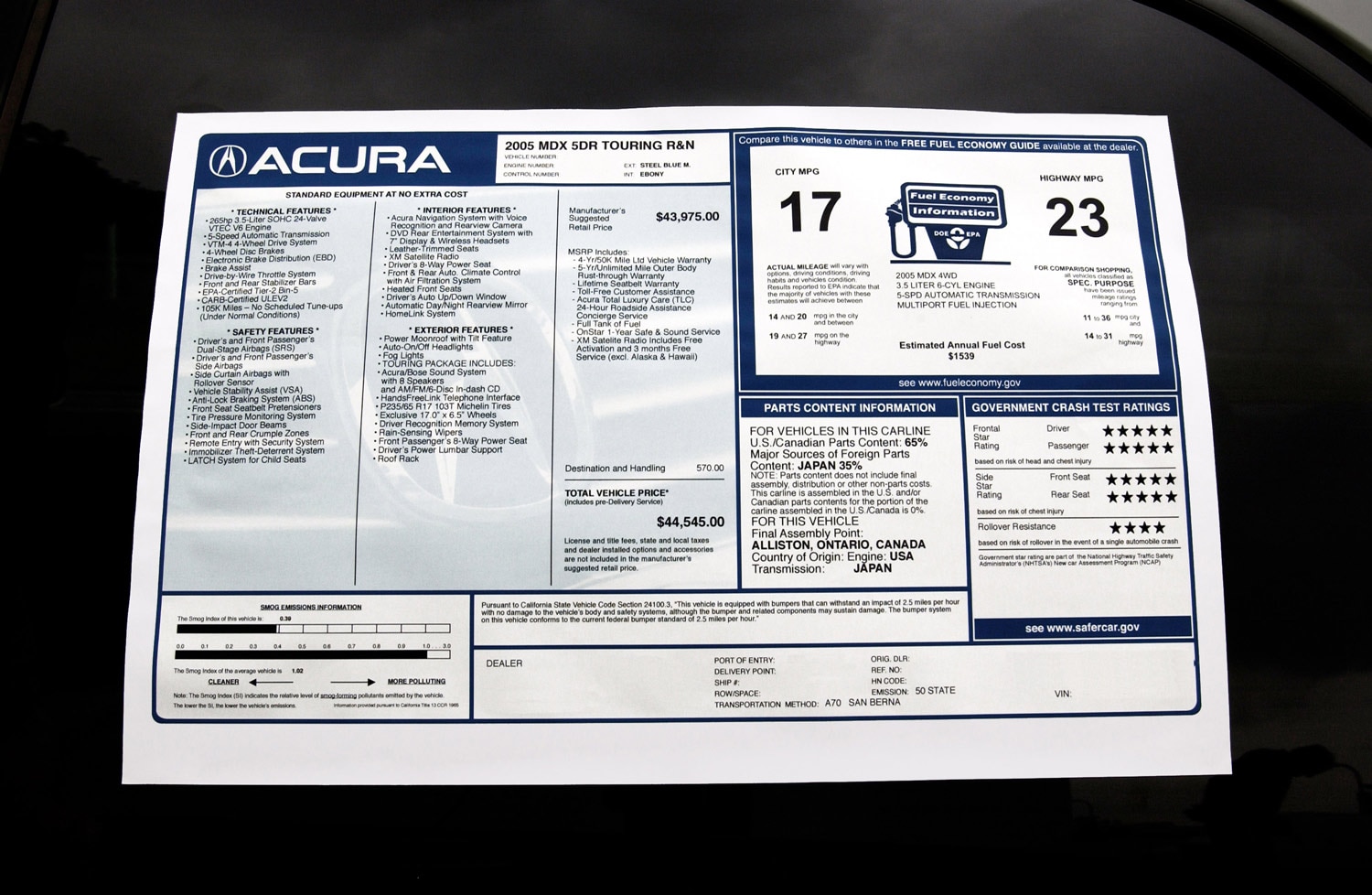The Reasons Why New Car Prices Change Throughout the Year
The price listed on the window sticker and the manufacturer's website might not be the same.
 Acura
Acura
As a diligent shopper, you may have noticed that the price quoted on the window sticker for a new car you're considering doesn't always align with the configurator you've found on the automaker's website. You've compared the two back to back, and yet the car in front of you is cheaper or more expensive than what you're finding online.
That's because the automaker has changed the car's price since it was built.
Midyear Price Hikes Are a Result of Feature or Market Changes
There's no telling when an automaker might raise its manufacturer's suggested retail price (MSRP), though occasionally it will do so more than once or twice in a model year. Rarely do automakers announce this, though in 2022 Subaru briefly put a banner on its website noting that most of its cars would cost as much as $750 more after a certain date.
"Nominal upward adjustments in MSRPs during a model year have long been business as usual," said Ed Kim, president and chief analyst at AutoPacific. "There are often running changes, such as revisions to options or packages, that necessitate midyear MSRP adjustments.”
Tweaks to included features could change as a result of supply issues. For instance, Honda had to remove the built-in vacuum option from its Odyssey minivan in early 2021 after Shop-Vac briefly went out of business.
Automakers might add or subtract trim levels throughout the model year, such as when Honda introduced a $3,000 cheaper version of its 2023 CR-V in February 2023, about six months after the rest of the lineup was in showrooms.
An increase in shipping costs can mean midyear price changes, too. The cost of transporting vehicles from the factory to dealers — typically via at least one distribution center — is supposed to be covered by the car's mandatory destination charge. This nonnegotiable fee, which can be as high as $2,000, isn't immune to price fluctuations. For example, in April 2023, Mazda increased its destination charge by $100 across the line.
It's also important to ensure you're looking at the correct window sticker. Compare the vehicle identification number (VIN) listed on it and the car itself and be sure you're not looking at a dealer addendum.
The Price You Pay
From Acura to Volvo and everything in between, you should expect to pay the price that's on the car's window sticker, even if it is lower than the MSRP currently on the dealer's website. If you've found a car that was built before an incremental midyear price hike, you might be able to save some money.
Still, Kim said that the MSRP is only that: the manufacturer's suggestion.
"MSRPs are less relevant today," he said, "because incentives and willingness of different dealers to cut deals can result in actual transaction prices that differ greatly from what's on the window sticker."
This is also true when leasing a vehicle, Kim said. Automakers often adjust residual values and offer big incentives to strategically move certain products.
EV Pricing Can Be Even More Volatile
In 2023, Ford and Tesla each took the unusual step of drastically cutting MSRPs on some of their electric vehicles. This can be a sign of things to come as far as midyear price tweaks.
Tesla, which ignores traditional model years in the marketing and updates of its vehicles, has long adjusted prices and version availability. The electric car manufacturer keeps lean inventories of its vehicles in stock for immediate delivery, and it controls its sales channels instead of relying on franchised dealers.
This may make it easier for Tesla to change prices. In just the first six weeks of 2023, for instance, Tesla changed prices four times. That may have set a precedent for other EVs.
"The highly unusual step of drastically reducing MSRPs," Kim said, "is the result of strategic moves on the part of Tesla that have forced other automakers to respond in kind."
Ford cut the price of its F-150 Lightning by up to $10,000 in July 2023. This was due to its ability to build more vehicles at an assembly plant in Michigan and a reduction in the cost of the model's batteries.
Written by humans.
Edited by humans.
 Andrew Ganz
Andrew GanzAndrew Ganz has had cars in his blood ever since he gnawed the paint off of a diecast model as a toddler. After growing up in Dallas, Texas, he earned a journalism degree, worked in public relations for two manufacturers, and served as an editor for a luxury-lifestyle print publication and several well-known automotive websites. In his free time, Andrew loves exploring the Rocky Mountains' best back roads—when he’s not browsing ads for his next car purchase.
Related articles
View more related articles